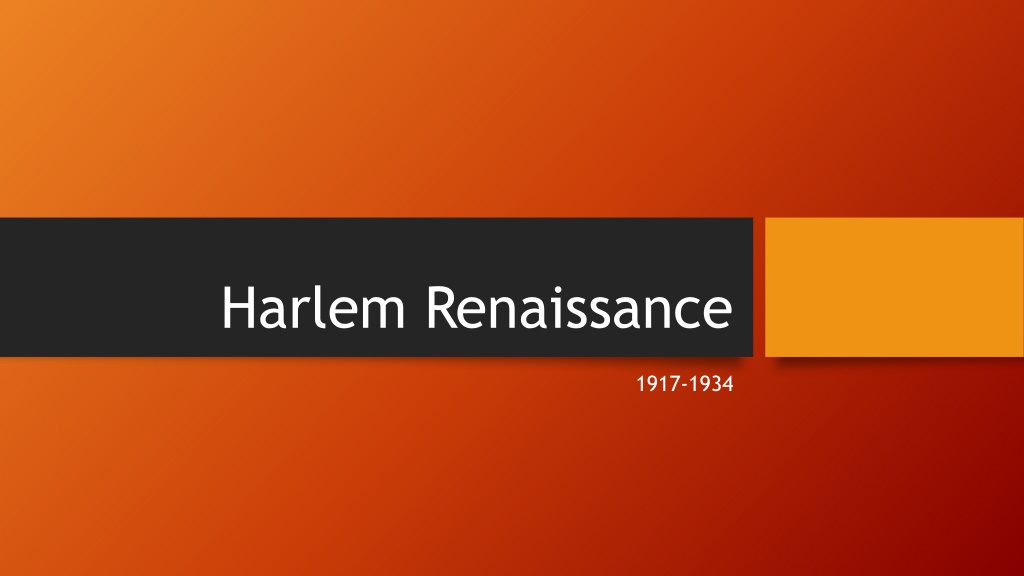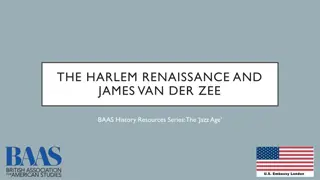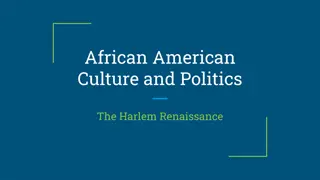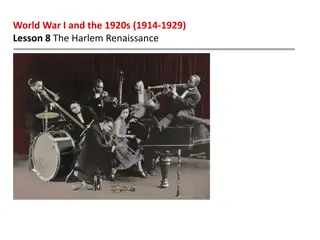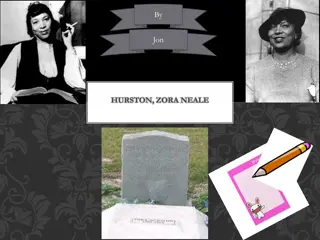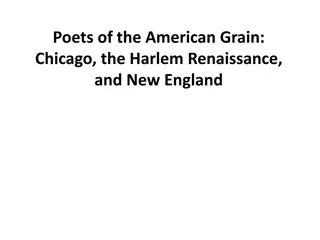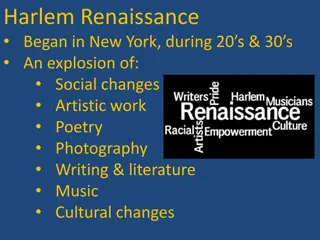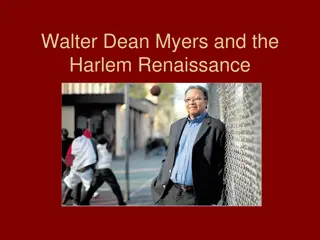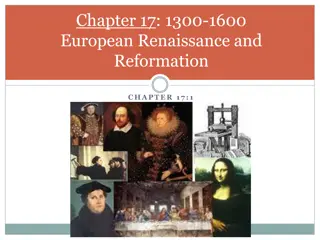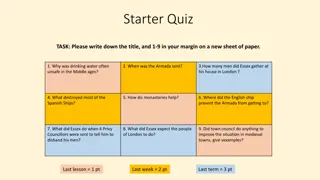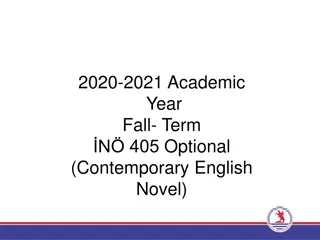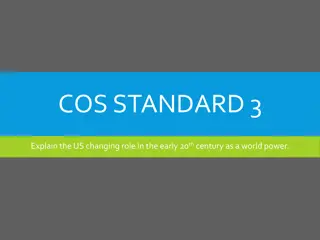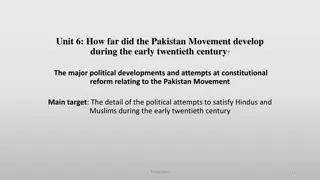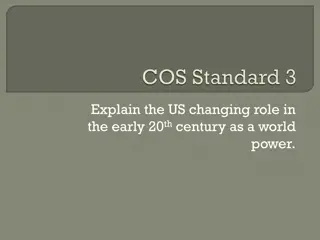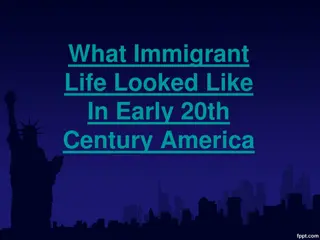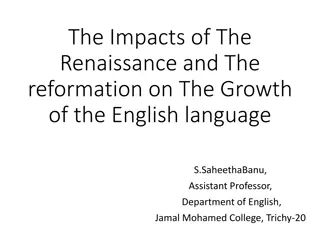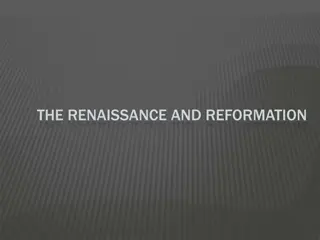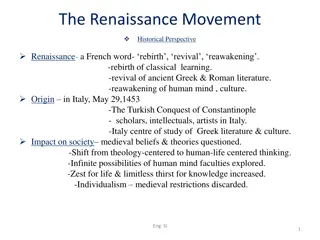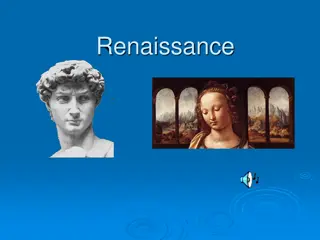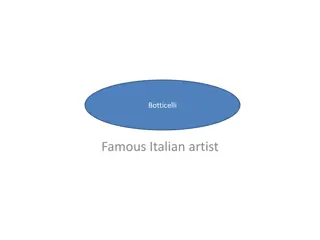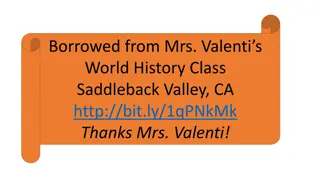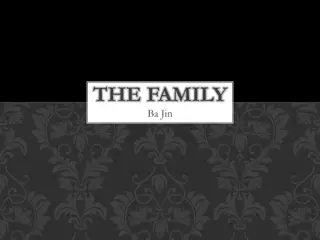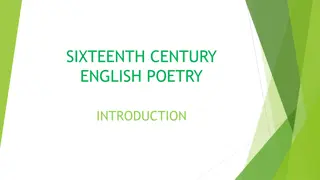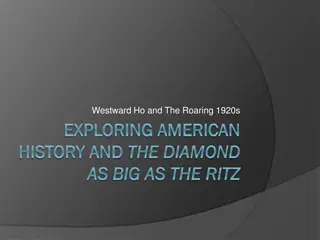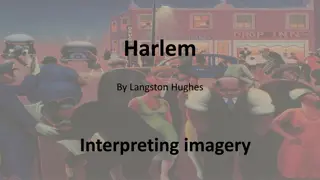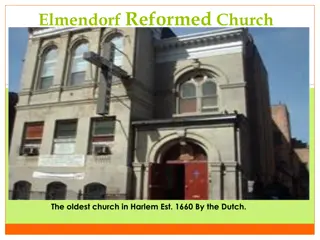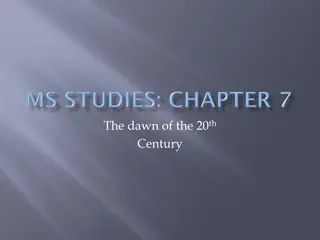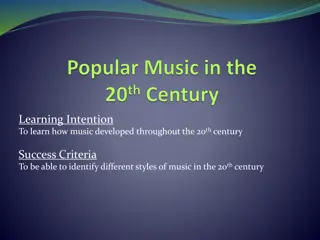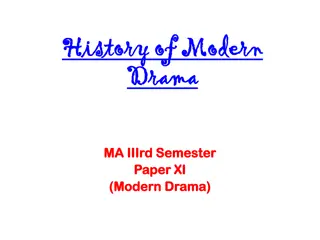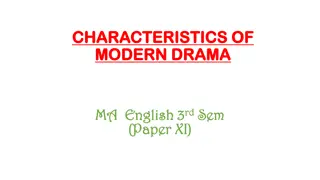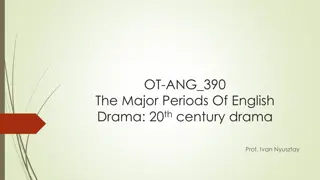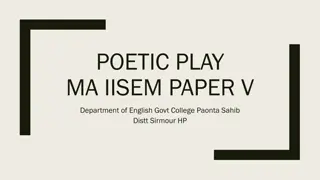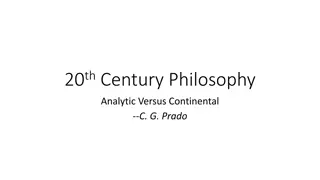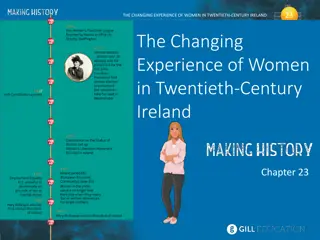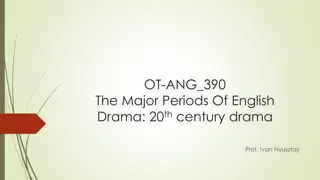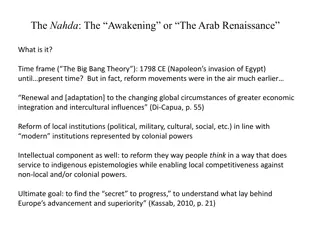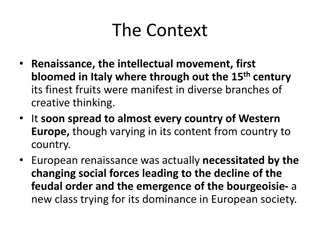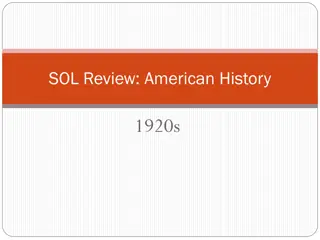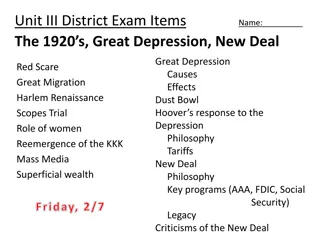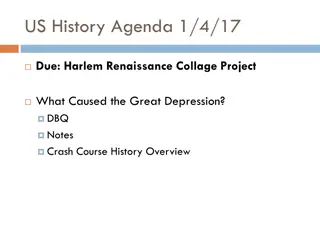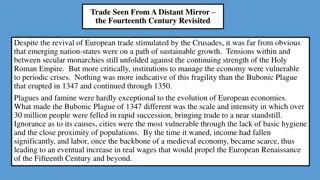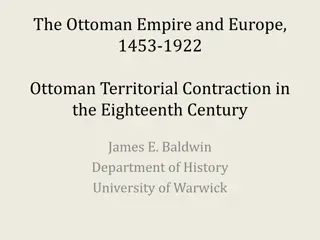The Harlem Renaissance in the Early 20th Century
The Harlem Renaissance, spanning from 1917 to 1934, was a vibrant cultural, social, and artistic movement primarily among African Americans in Harlem, New York. This period marked a significant shift in African American creativity, with notable figures like Langston Hughes, Claude McKay, and Jean Toomer contributing to literature, music, art, and social change. The movement reflected the struggles, aspirations, and resilience of the African American community amid the backdrop of racial discrimination and societal challenges.
Download Presentation

Please find below an Image/Link to download the presentation.
The content on the website is provided AS IS for your information and personal use only. It may not be sold, licensed, or shared on other websites without obtaining consent from the author. Download presentation by click this link. If you encounter any issues during the download, it is possible that the publisher has removed the file from their server.
E N D
Presentation Transcript
Harlem Renaissance 1917-1934
History 1919 Summer. In the Chicago race riots, whites attacked black Americans, leading to 38 deaths (23 black, 15 white) and 500 injuries. 1921. George Washington Carver of the Tuskegee Institution presents his innovative ideas on agriculture to the U. S. House of Representatives.
Culture 1920. 16 January. The 18th Amendment (Prohibition Amendment) goes into effect at midnight and continues for 12 years until it is repealed. 1923. The FBI begins investigating an unusually high rate of murders and mysterious deaths among the Osage in what Oklahoma newspapers call the "Osage Reign of Terror." 1923. The Teapot Dome scandal erupts as the deal between Harry F. Sinclair of Mammoth Oil and Secretary of the Interior Albert B. Fall is revealed. Fall is the first cabinet member in U. S. history to go to jail.
Beginnings 1917-1923: Bohemian Renaissance Expatriate life in Europe, especially Paris, as a means of escaping U. S. racism 1920 Eugene O Neill s The Emperor Jones with Charles Gilpin Jean Toomer, Cane (1923) Claude McKay, Harlem Shadows (1922)
Themes and Ideas Great Black Migration of African Americans to northern cities after WWI, especially Harlem in New York, with loss of connections with the land Demands for social change and an end to legal, institutional, and social racism Changing roles for African Americans, with racial uplift and Du Bois s idea of the talented tenth being important in the first wave
1924-1926: Talented Tenth Renaissance Dominated by ideology of civil rights advancement 1924 Jessie Redmon Fauset, There is Confusion. Fauset was literary editor of The Crisis 1919-1926. 1925 May Opportunity Banquet: Langston Hughes reads The Weary Blues
Science and Art Reconnecting with African past and history interest in the primitive in arts, which was a double-edged sword natural and artificial constructions of identity Interest in anthropology, sociology (DuBois) Challenging scientific approaches to race
Culture: 1925 1925 F. Scott Fitzgerald, The Great Gatsby Ernest Hemingway, In Our Time Willa Cather, The Professor's House Theodore Dreiser, An American Tragedy Gertrude Stein, The Making of Americans Alain Locke, The New Negro Anzia Yezierska, Bread Givers John Dos Passos, Manhattan Transfer Edna Ferber's So Big wins the Pulitzer Prize. The New Yorker is founded by Harold Ross. Its unofficial motto: "Not edited for the old lady in Dubuque" (James Thurber, The Years with Ross, 75). Alain Locke, Fire!! 1926
The New Negro 1925 Special issue of Survey Graphic on The New Negro edited by Alain Locke; published by Albert & Charles Boni as a volume. 34 African American and 4 white contributors that included most of the significant Harlem Renaissance writers (except for George Schuyler and Wallace Thurman)
Themes and Ideas, continued Lewis: For the whites, art was the means to change society before they would accept it. For the blacks, art was the means to change society in order to be accepted into it. Interest in African American art as more authentic, exciting, and vibrant than standardized mass culture produced by whites Modernist painters and artists (Picasso) and their use of African themes in art; work by Aaron Douglas and others used the same sources
Phase Three, 1926-1935: Backlash Rebellion against the civil rights establishment 1926 W.E.B. DuBois, The Criteria of Negro Art 1926 Fire!! 1928 Nella Larsen, Quicksand 1928 Claude McKay, Home to Harlem 1929 Nella Larsen, Passing 1929 Claude McKay, Banjo
Visual Arts Aaron Douglas, Study for Aspects of Negro Life (1934)
Later Writers and Artists 1929 Wallace Thurman, The Blacker the Berry 1930 The Green Pastures opens on Broadway 1931 James Weldon Johnson, Black Manhattan 1931 George Schuyler, Black No More 1934 Zora Neale Hurston, Jonah s Gourd Vine 1935 March 19 Harlem Riot marks the end of the Renaissance (Lewis)
